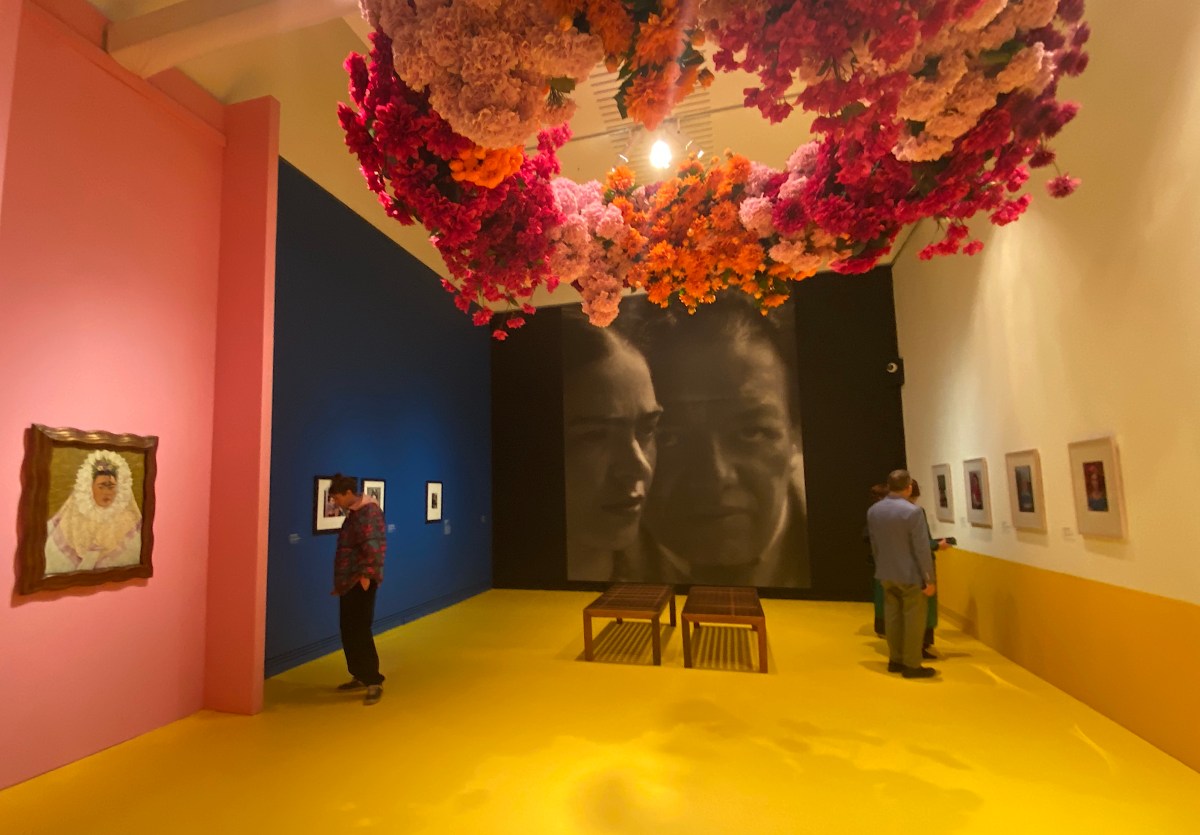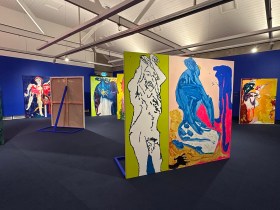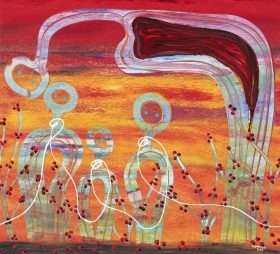In 1917 Mexico was given a new start – a moment to reimagine itself as a new constitutional republic. In a very unbureaucratic move, the government (under the presidency of Álvaro Obregón) handed over its public buildings to artists to tell a story of this burgeoning postcolonial nation – one centred on land reform and Indigenous heritage, and with socialist ideals for equality. And so, the Muralists of Mexican Modernism were born, among them Diego Rivera.
It is a backstory that is not lost on visitors to Frida & Diego: Love & Revolution, the Art Gallery of South Australia’s (AGSA) latest major exhibition. Yes, facsimiles of Rivera’s murals pepper the exhibition. But more so, it offers a narrative at a time when Australia itself faces its own chapter of ‘revolution’ as it goes to a Referendum, with the similar vision to acknowledge an Australian Indigenous voice.
Read: First Nations Artists on the Voice
While the names ‘Frida’ and ‘Diego’ whip up a kind of mania globally, in the context of this exhibition they are an abridged ‘shorthand for an entire era’ of modernism, as Rosa Boshier has written.
‘Each generation brings a new lens through which to view the phenomenon that is Frida Kahlo,’ AGSA Director Rhana Devenport adds. And indeed, Kahlo offers these in doses – she was bisexual, she lived with a disability, she embraced her ethnicity, led in speaking openly about the female body … and so on.
It is this topic-rich timeliness that feeds our enduring appetite for her work and stokes the mythology – ‘Fridamania’ is actually a documented term. So how do we make sense of this exhibition that delivers so much more than the myth?
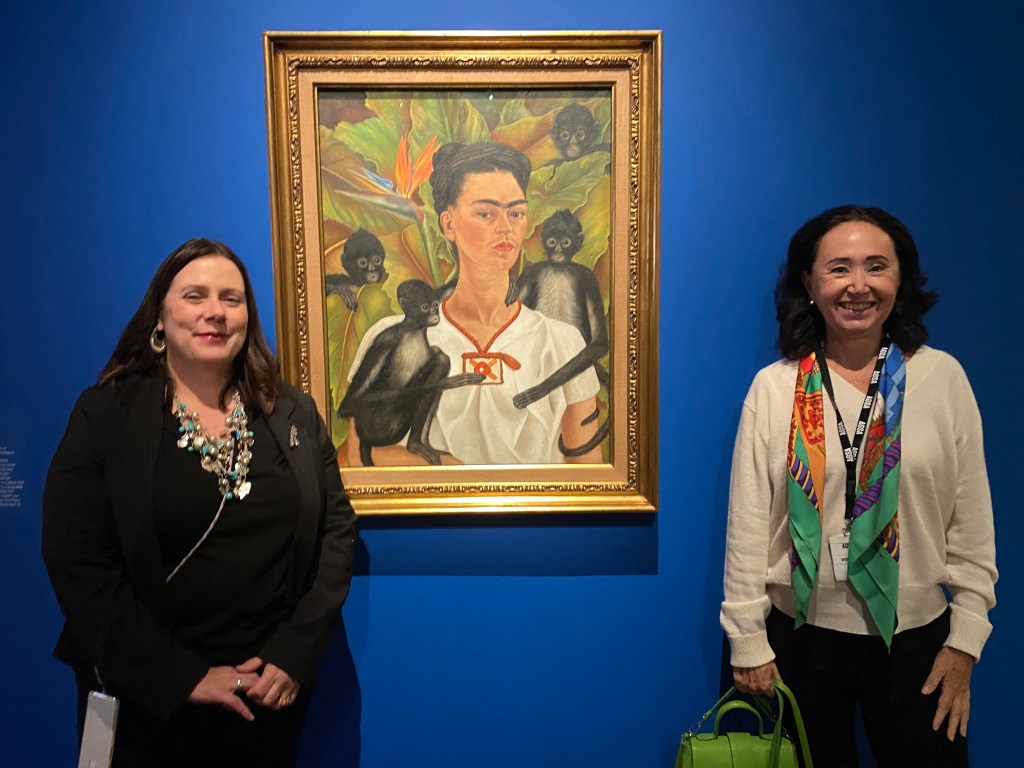
Awe in the analogue experience
The exhibition includes over 150 works from the Jacques and Natasha Gelman Collection, which has been on the road for a whopping 20-plus years, including an earlier visit to the Art Gallery of NSW in 2016.
Where this exhibition differs to that edition and others, is that it is the largest collection of Frida Kahlo drawings and paintings to ever be presented – anywhere. Kahlo only ever made 143 paintings; 10 are in the Gelman Collection along with 13 drawings, all of which have travelled to Adelaide.
It was an ambitious ask by Tansy Curtin, AGSA’s Curator of International Art, who has been working on the show for the past two years. ‘So, about 10% of Frida’s oeuvre is in this exhibition,’ she explains.
‘You can’t see this many, even in Mexico City, or anywhere in the world,’ adds Magda Carranza de Akle, Curator of the Gelman Collection. They are joined by 10 major works by Rivera, making up a quarter of the exhibition.
And while this exhibition has its mandatory sprays of floral blooms, a wrought iron-posted bed, a flotilla of ethnic frocks and a Mexican palette of coloured painted walls, bowing to people-pleasing expectations, in some ways these are the clichés that create congestion to the broader narrative here, should audiences look beyond them.
While curating an exhibition headlining Frida Kahlo and Diego Rivera is a sure winner, it can also be a noose, so charged with expectation and mythology. This is where Curtin has done a great job. One first enters the exhibition into a moment of nationalistic zeal that marries architecture with prints of fragments of Rivera’s murals and photographs by Guillermo Kahlo – Frida’s father. It immediately grounds the hype.
Especially in the light of the kind of multisensory immersion into ‘Frida’s world’ that events such as The Life of an Icon (Sydney Festival 2023) offered, this exhibition will feel very analogue – perhaps even outdated for some. But in that analogue approach there is an awe that far surpasses tech wizardry or fridge magnets. Nothing compares to standing in front of one of Kahlo’s rare works and seeing her hand in these paintings.
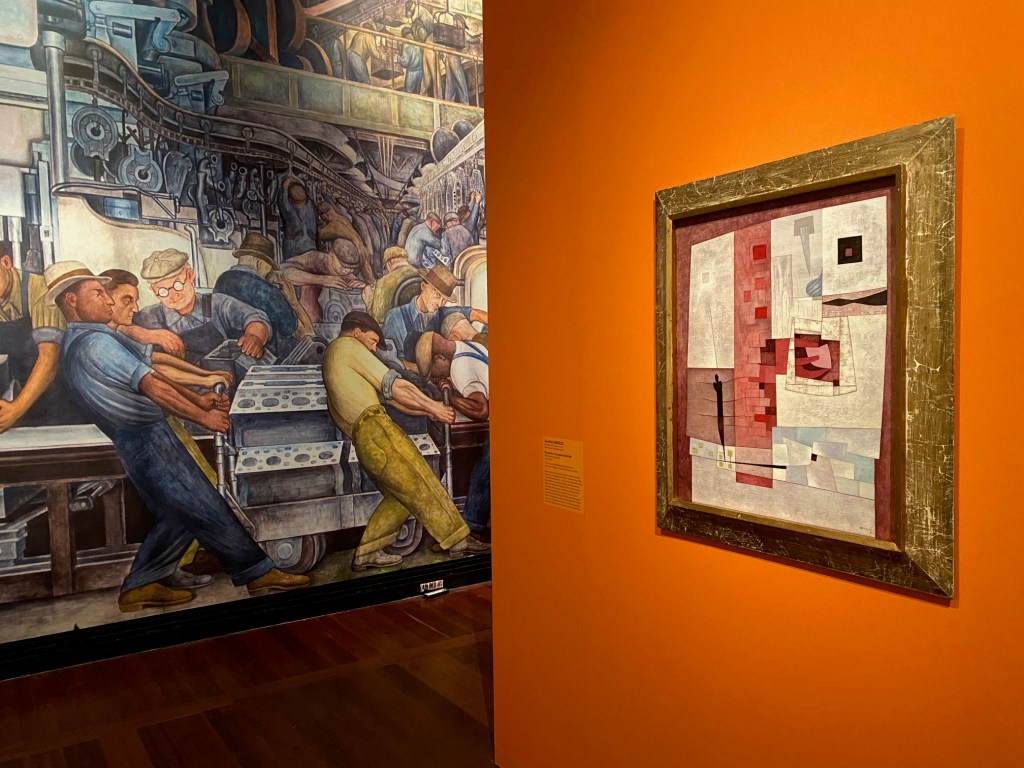
How do we move beyond cult figures?
Mexican Modernism was an artistic movement that flourished in during the 1920s to 1940s. That feels ancient, and remote, and we know little of it here in Australia. But it is curiously very global, and very now.
‘There is resonance here for Australian audiences to think about Indigenous cultures, and the representation of Indigenous people, and the role of government in that and the impact of colonisation – there’s a lot of synergy,’ Curtin tells ArtsHub.
The first work by Kahlo that audiences encounter is, The Love Embrace of the Universe, the Earth (Mexico), Myself, Diego and Senor Xolotl (1949), a self-portrait that celebrates the final resolution of their marriage. That embrace starts with the pre-Colombian universe, then Mother Earth, then Kahlo nestling a defenceless Rivera in a gesture of care. It is this kind of stacked narrative that offers a cue for the broader exhibition.
It is not presented ostentatiously – if anything, it’s tucked away. In fact, it was the last painting in the 2016 AGNSW show – its crescendo. That repositioning says a lot. Our world is at a moment of craving care on all levels. It is surrounded by the paintings of Gunther Gerzso, Rufino Tamayo, Miguel Covarrubias, Carlos Mérida, María Izquierdo and Juan Soriano – a roll call of the Mexican avant garde who were championing a new world order.
Highlights include Mérida’s Variation on an old theme (1960, Gerzso’s Portrait of Jacques Gelman (1957) and Tamayo’s Portrait of Natasha Gelman (1948). Carranza de Akle explains: ‘There are 38 works by Gunter Gerzso alone, of the 98 works the Gelmans collected. He is an artist you would never know; that is one of the great revelations of this exhibition.’
A narrative of two relationships
Jacques and Natasha Gelman arrived in Mexico at this avant garde high point, in 1939. The year before, Kahlo had presented her first solo exhibition in New York.
What has to be remembered, viewing this exhibition, is that it is drawn from a private collection; it’s a story of both friendship and patronage. Some writers have described the collection as ‘a portrait of two marriages – the first being that of the artists and the second being that of the Gelmans’.
Many of the 98 works the Gelmans collected were commissioned – one might say they bank-rolled Mexican Modernism. But it was under the care of Robert Littman, who became the collection’s custodian in 1989, that it has grown to more than 400 artworks. Curiously, it was Littman who gave Kahlo that first New York show. The collegiate circle is everything. And as viewers progress through this exhibition, they step deeper into the world of Rivera and Kahlo and their contemporaries – a narrative told through historic film, photographs and costumes.
One of the real successes of this exhibition is the way it clusters those photographs alongside Kahlo’s self-portraits, offering a soft tension of realities. There are the iconic images by Edward Weston, Héctor García Cobo, Fritz Henle, Leo Matiz, Bernard Silberstein, Lola Álvarez Bravo, Bernice Kolko and, of course, the incredible 1939 photoshoot by Nickolas Muray, which saw Kahlo’s image on the cover of Vanity Fair and Vogue magazines.
These photographs were taken at the height of their on-again, off-again, 10-year relationship, and are presented in the final gallery adjacent to Kahlo’s portrait Diego on my mind (Self-portrait as Tehuana), 1943. It is an interesting counterpoint to that first Kahlo viewers see.
The Gelmans largely collected Kahlo’s portraits, rather than her more traumatic images, and this exhibition presents them in riches: Self-portrait with necklace (1933), Self-portrait on bed (1937), Self-portrait with braid (1941), Self-portrait with monkeys (1943), Self-portrait with red and gold dress (1941). It’s a checklist of greats, and box tick for Kahlo fans.
The artist was unflinching in her exploration of self-identity. Her paintings were commanding statements of self, but also held a social and cultural potency. This is why context is this exhibition’s foundation, and we find it in the nooks and juxtapositions in this show. A great example is a consideration of Maria Izquierdo’s Living still life (1946) and Kahlo’s The bride who becomes frightened when she sees life opened (1943) like paintings that use the modern moment to champion feminism.
In the exhibition’s publication, Curtin writes that Kahlo’s ‘reclamation of her personal and artistic power through her identity and image-making resonates strongly with audiences today, and perhaps hints at a pathway to our fundamental quest for belonging’.
Yes, this is an exhibition about Frida and Diego and, yes, it is an exhibition about love and revolution, but more so, it is about finding our place in the world and being brave enough to embrace it. It posits that all voices have a place, and that lesser known champions of new thinking can sit equally alongside fridge magnet stardom. It is a good lesson for all Australians at this moment.
Frida & Diego: Love & Revolution is showing at the Art Gallery of South Australia 24 June to 17 September 2023. This is a ticketed exhibition.
The writer travelled to Adelaide as a guest of AGSA.
